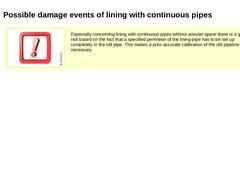
|

| (Image: Attention!)
Especially concerning lining with continuous pipes without annular space there is a great risk based on the fact that a specified perimeter of the lining-pipe has to be set up completely in the old pipe. This makes a prior accurate calibration of the old pipeline necessary. |
|
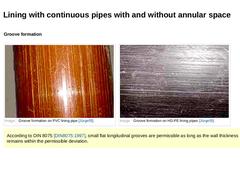
|

Groove formation | |
(Image: Groove formation on PVC lining pipe [Jürge05])
|
(Image: Groove formation on HD-PE lining pipes [Jürge05])
|
| |
According to DIN 8075 [DIN8075:1997], small flat longitudinal grooves are permissible as long as the wall thickness remains within the permissible deviation. |
|
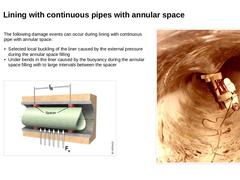
|

|
The following damage events can occur during lining with continuous pipe with annular space: - Selected local buckling of the liner caused by the external pressure during the annular space filling
- Under bends in the liner caused by the buoyancy during the annular space filling with to large intervals between the spacer
| (Image: Buckled HD-PE pipe [John98])
| | (Image: Loading of a pipe section between spacers with reference to [FI-Hoech] [Image: S&P GmbH])
|
|
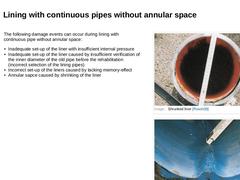
|

|
The following damage events can occur during lining with continuous pipe without annular space: - Inadequate set-up of the liner with insufficient internal pressure
- Inadequate set-up of the liner caused by insufficient verification of the inner diameter of the old pipe before the rehabilitation (incorrect selection of the lining pipes)
- Incorrect set-up of the liners caused by lacking memory-effect
- Annular sapce caused by shrinking of the liner
| |
|
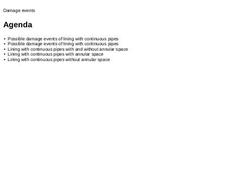
|

|
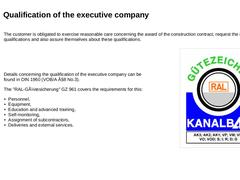
|

|
The customer is obligated to exercise reasonable care concerning the award of the construction contract, request the required qualifications and also assure themselves about these qualifications. | |
Details concerning the qualification of the executive company can be found in DIN 1960 (VOB/A §8 No.3). The "RAL-Gütesicherung" GZ 961 covers the requirements for this: - Personnel,
- Equipment,
- Education and advanced training,
- Self-monitoring,
- Assignment …
|
|
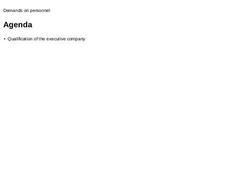
|

|
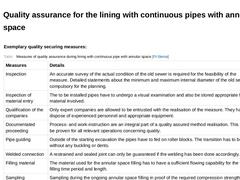
|

Exemplary quality securing measures: (Table: Measures of quality assurance during lining with continuous pipe with annular space [FI-Steina]) |
|
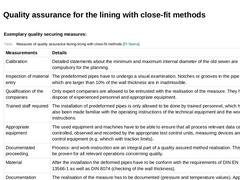
|

Exemplary quality securing measures: (Table: Measures of quality assurance during lining with close-fit methods [FI-Steina]) |
|
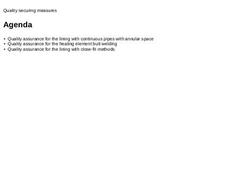
|

|
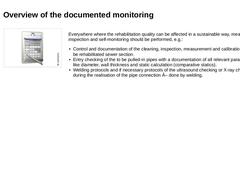
|

| (Image: Documentation)
|
Everywhere where the rehabilitation quality can be affected in a sustainable way, measures for inspection and self-monitoring should be performed, e.g.: - Control and documentation of the cleaning, inspection, measurement and calibration of the to be rehabilitated sewer section.
- Entry checking of the to be pulled-in pipes with a documentation of all relevant parameters, like diameter, wall thickness and static calculation (comparative …
|
|
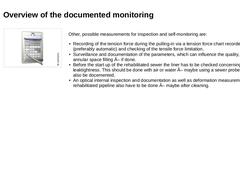
|

| (Image: Documentation)
|
Other, possible measurements for inspection and self-monitoring are: - Recording of the tension force during the pulling-in via a tension force chart recorder (preferably automatic) and checking of the tensile force limitation.
- Surveillance and documentation of the parameters, which can influence the quality, during the annular space filling – if done.
- Before the start up of the rehabilitated sewer the liner has to be checked …
|
|
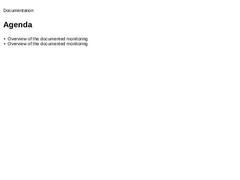
|

|
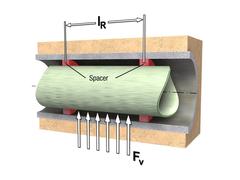
|

This module deals with the quality assurance of lining with continuous pipes with and without annular space. |
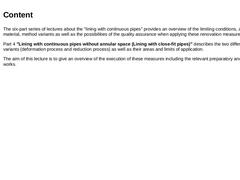
|

The six-part series of lectures about the "lining with continuous pipes" provides an overview of the limiting conditions, applied material, method variants as well as the possibilities of the quality assurance when applying these renovation measures. Part 4 "Lining with continuous pipes without annular space (Lining with close-fit pipes)" describes the two different method variants (deformation process and reduction process) as well as their areas … |
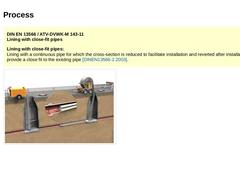
|

DIN EN 13566 / ATV-DVWK-M 143-11
Lining with close-fit pipes Lining with close-fit pipes:
Lining with a continuous pipe for which the cross-section is reduced to facilitate installation and reverted after installation to provide a close fit to the existing pipe [DINEN13566-1:2003]. | | (Image: Compact pipe process with reference to [FI-Wavin] - Pulling-in the C-shaped folded continuous pipe [Image: S&P GmbH])
|
|

|

|
Depending on the type of deformation and reversion of the plastic continuous pipe, one generally distinguishes in principle between the deformation and the reduction processes. |
|
Deformation process (Image: Compact pipe process with reference to [FI-Wavin] - Pulling-in the C-shaped folded continuous pipe [Image: S&P GmbH]) |
Reduction process (Image: Reduction process with thermal-mechanical diameter reduction (Swagelining) with reference to [FI-Advan] - … |
|
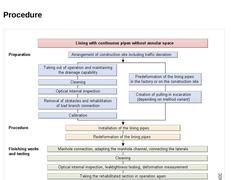
|

| (Image: Sequence diagram for renovation of drains and sewers with prefabricated pipes - Lining with continuous pipes without annular space)
|
|
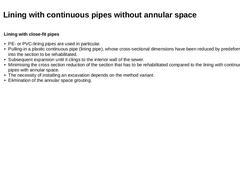
|

|
Lining with close-fit pipes - PE- or PVC-lining pipes are used in particular.
- Pulling-in a plastic continuous pipe (lining pipe), whose cross-sectional dimensions have been reduced by predeformations, into the section to be rehabilitated.
- Subsequent expansion until it clings to the interior wall of the sewer.
- Minimising the cross section reduction of the section that has to be rehabilitated compared to the lining with continuous pipes with annular …
|
|
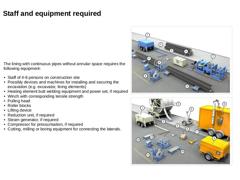
|

|
The lining with continuous pipes without annular space requires the following equipment: -
Staff of 4-6 persons on construction site
-
Possibly devices and machines for installing and securing the excavation (e.g. excavator, lining elements)
-
Heating element butt welding equipment and power set, if required
-
Winch with corresponding tensile strength
-
Pulling head
-
Roller blocks
-
Lifting device
-
Reduction unit, if required
-
Steam generator, if required
|
|
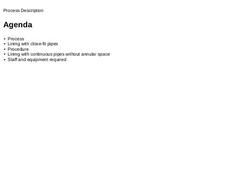
|

|
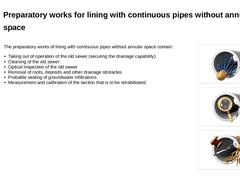
|

|
The preparatory works of lining with continuous pipes without annular space contain: - Taking out of operation of the old sewer (securing the drainage capability)
- Cleaning of the old sewer
- Optical inspection of the old sewer
- Removal of roots, deposits and other drainage obstacles
- Probable sealing of groundwater infiltrations
- Measurement and calibration of the section that is to be rehabilitated
| |
(Image: Cleaning)
|
|
(Image: Inspection)
|
|
(Image: Damages)
|
|
|
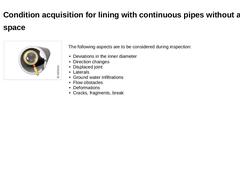
|

| (Image: Inspection)
|
The following aspects are to be considered during inspection: - Deviations in the inner diameter
- Direction changes
- Displaced joint
- Laterals
- Ground water infiltrations
- Flow obstacles
- Deformations
- Cracks, fragments, break
|
|
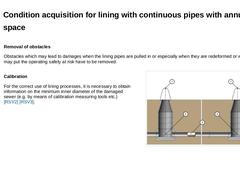
|

Removal of obstacles Obstacles which may lead to damages when the lining pipes are pulled in or especially when they are redeformed or which may put the operating safety at risk have to be removed. | Calibration For the correct use of lining processes, it is necessary to obtain information on the minimum inner diameter of the damaged sewer (e.g. by means of calibration measuring tools etc.) [RSV2] [RSV3]. | (Image: Determining the minimum cross section … |
|
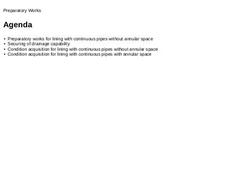
|

|


